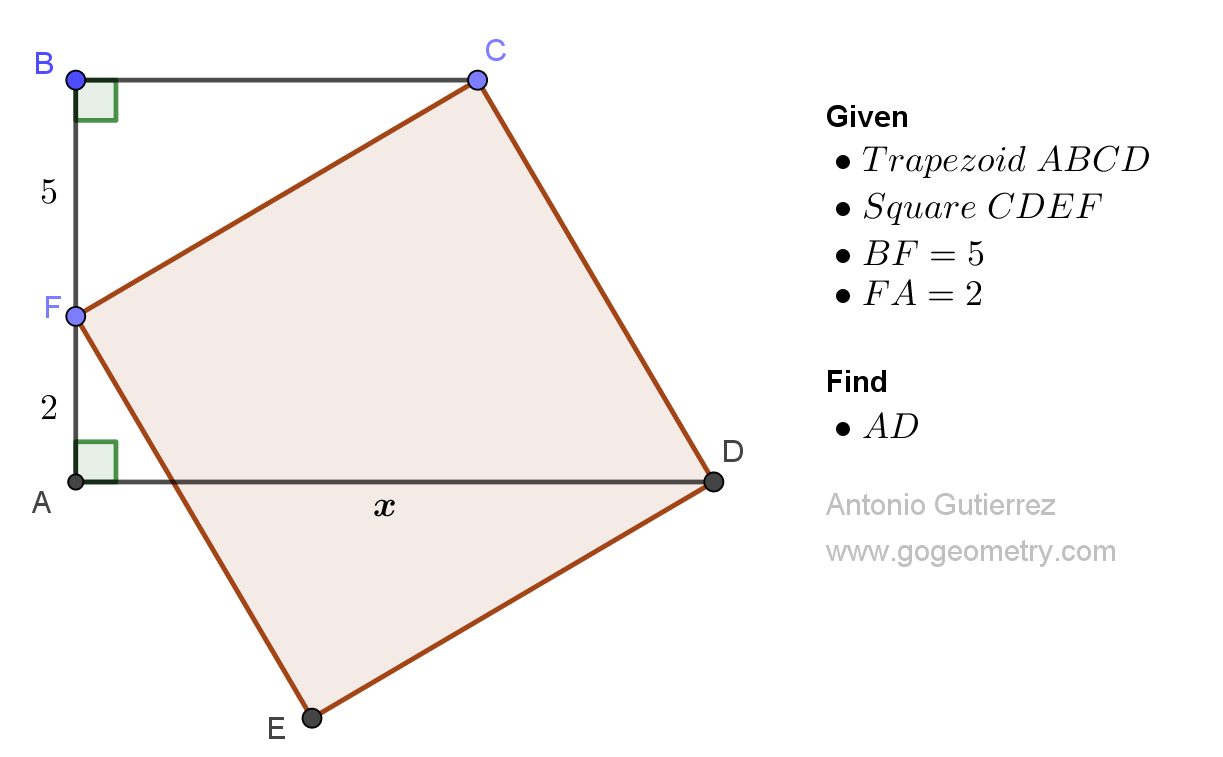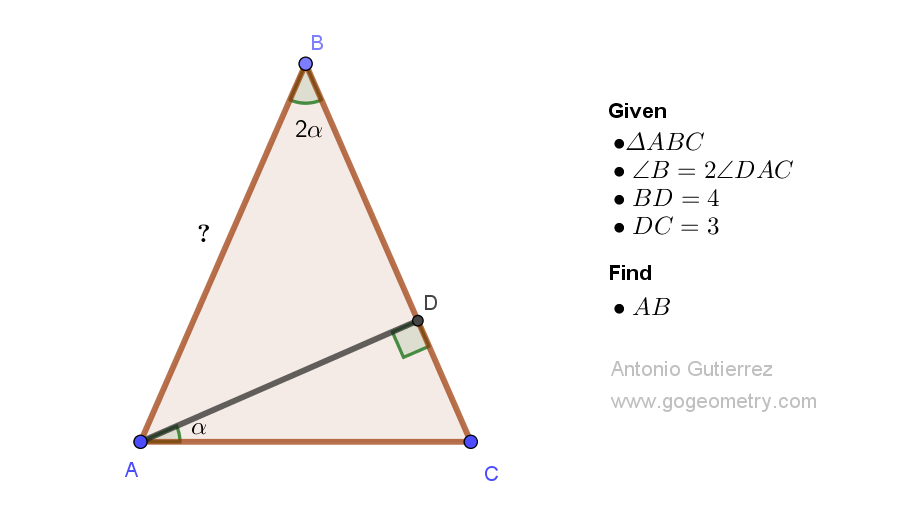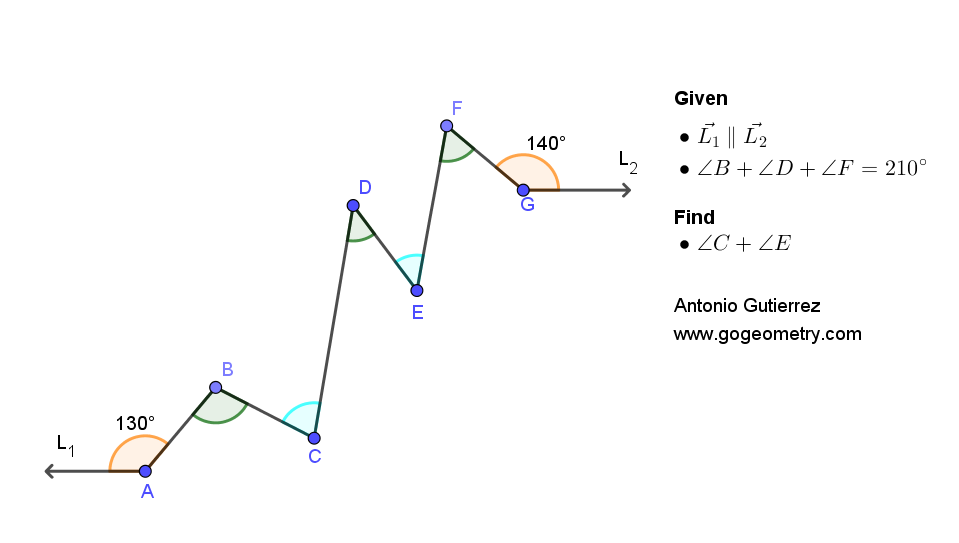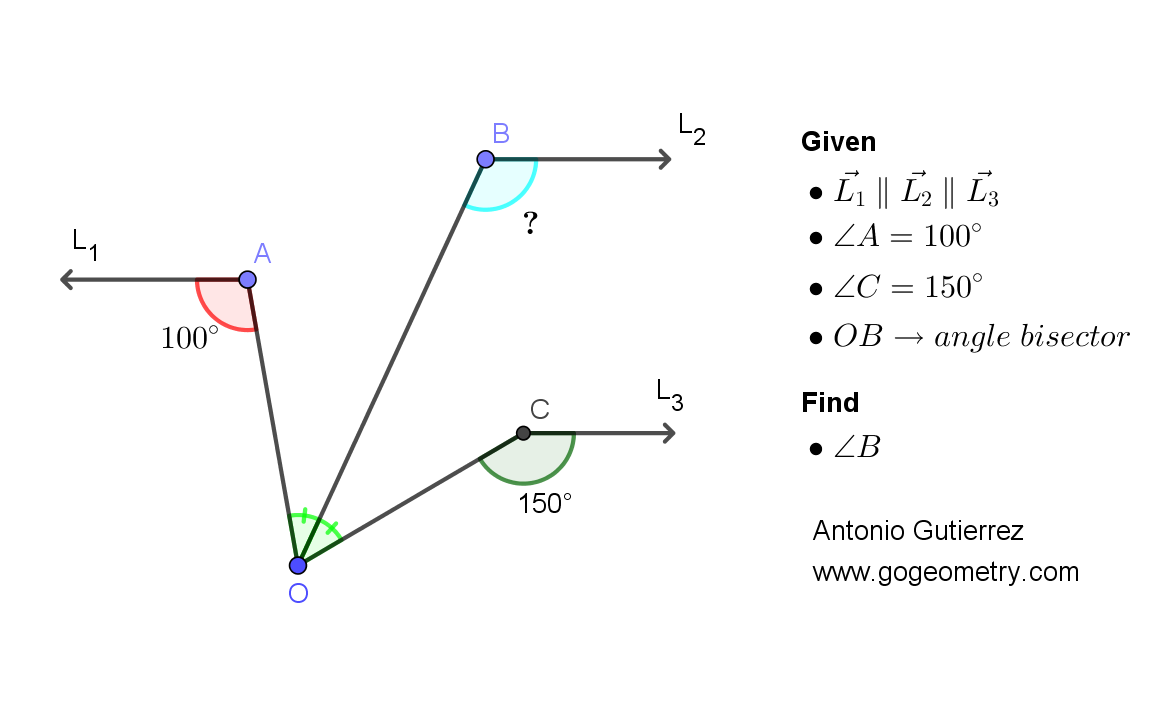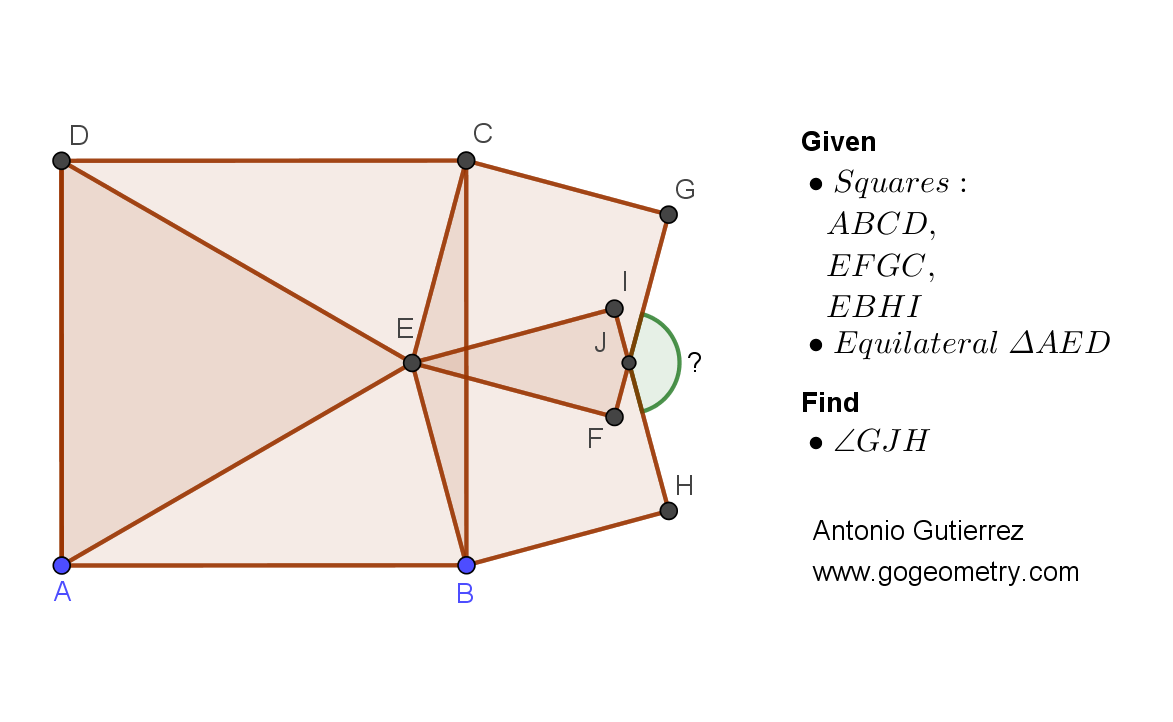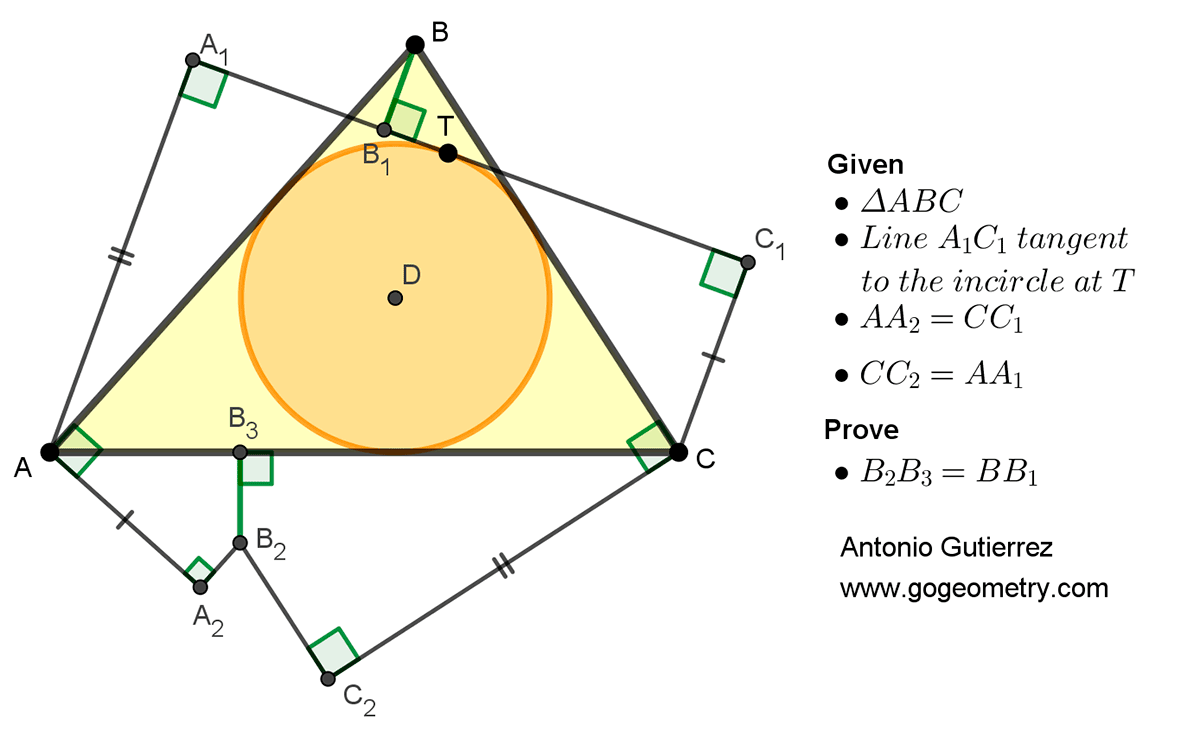Geometry Problem 1508: Understanding Triangle Geometry: Isosceles, Equilateral, Quadrilateral, Angular. Difficulty Level: High School.
In the figure shown, with angle B = 60 degrees, angle D = 80 degrees, and AB = BC = AD, calculate the measure of angle BCD.
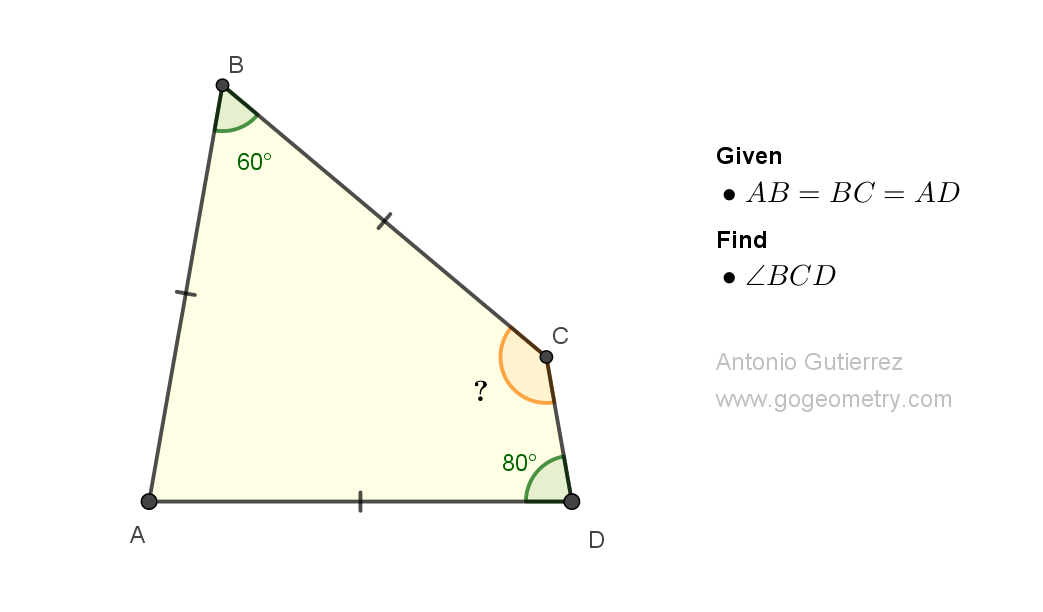
Definitions and Suggestions
- A triangle is a polygon that has three sides, three vertices, and three angles. Triangles are some of the most basic shapes in geometry and can be found in many different forms.
- An angle is a figure formed by two rays, or half-lines, that have a common endpoint and extend in different directions.
- An isosceles triangle is a type of triangle that has two sides of equal length and two angles opposite those sides of equal measure.
- An equilateral triangle is a type of triangle in which all three sides are of equal length, and all three angles are equal to 60 degrees.
- A quadrilateral is a four-sided polygon, which is a two-dimensional geometric figure with straight sides.
- Suggestions:
The sum of the angles in a triangle is always 180 degrees, which is known as the Triangle Sum Theorem.
- The sum of the angles in a quadrilateral is always 360 degrees.
View or post a solution
Discover Even More: See Also...
Problem 1509
Problem 1507
Problem 1506
Problem 1505
Problem 1504
Problem 1503
Recent Additions
Geometry Problems
Open Problems
Visual Index
All Problems
Triangle
Angles
Equilateral Triangle
Isosceles Triangle
Isosceles Triangle 80-20-80
Quadrilateral
View or Post a solution
Search our site with Google:
